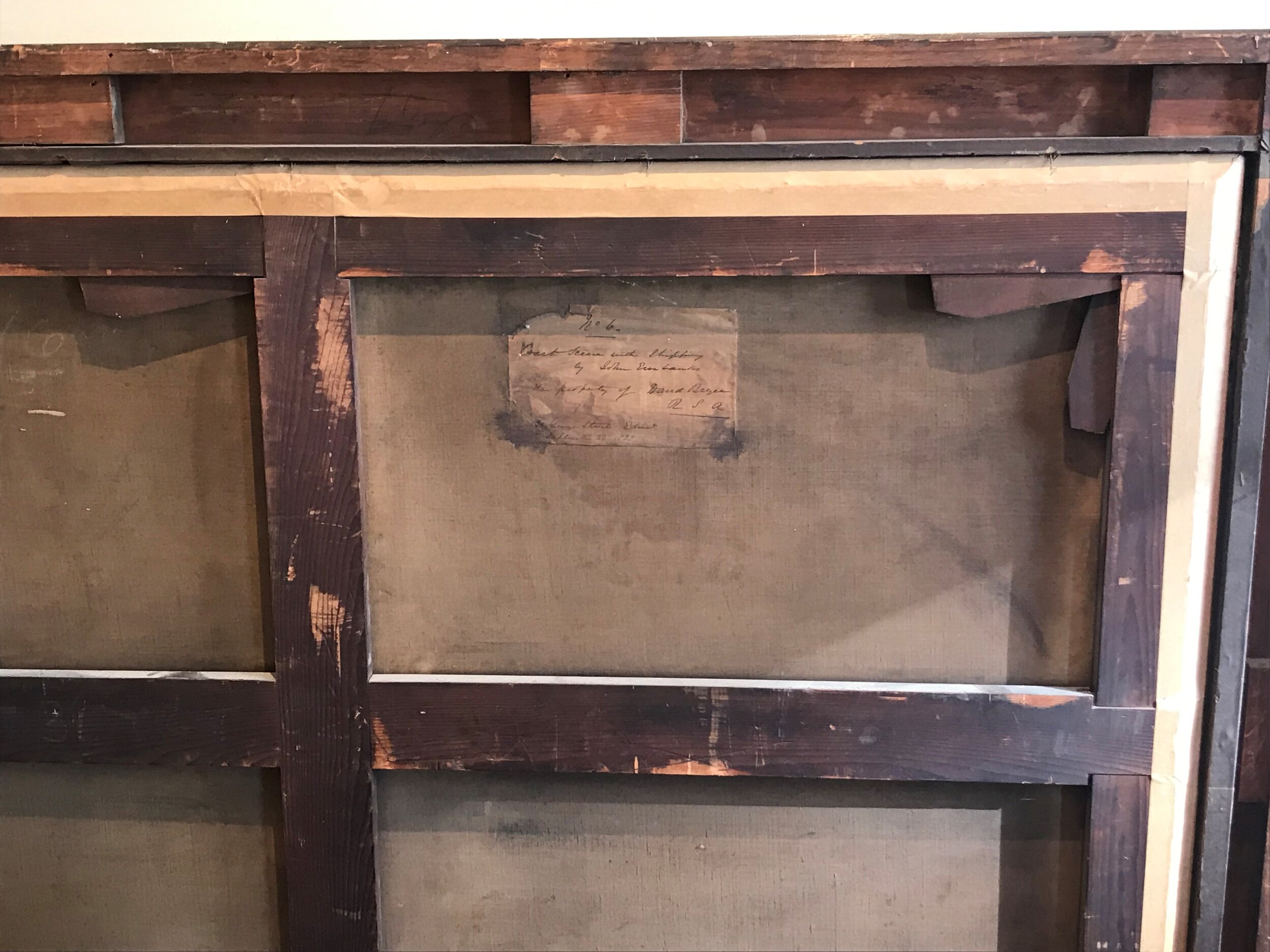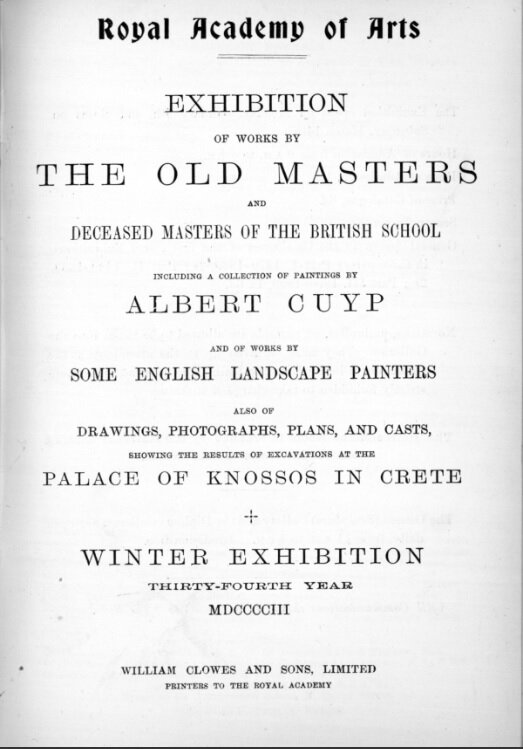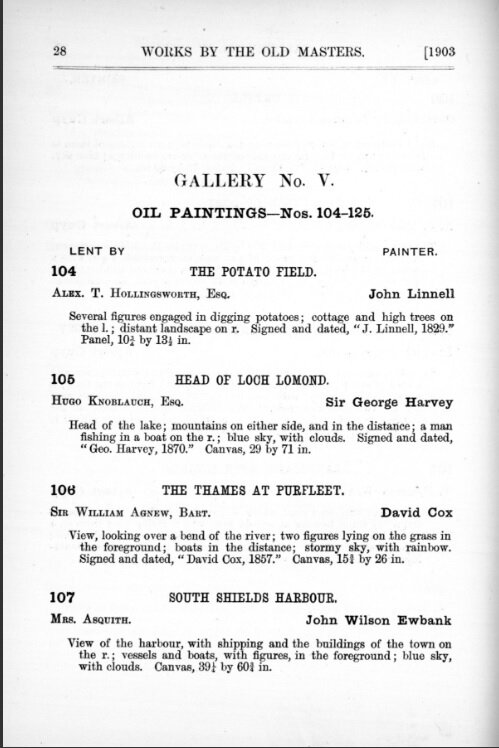John Wilson EWBANK (1779-1847, English)
Shipping in the Harbour, South Shields
c. 1827
Oil on canvas
39.5 x 58 inches unframed
47.75 x 66.5 inches framed
Price: Price on Application
Exhibited at the Royal Academy Winter Exhibition, 1903, on loan from Mrs Asquith.
Inscribed ‘No. 6 Coast Scene with Shipping by John Ewbanks [sic] the Property of David Bryce RSA 131 George Street Edinburgh, September 22. 1863’ (on an old label attached to the reverse)
Provenance:
Private Collection;
Fine Arts Society;
Christie's October 2002; Lot 11;
Private Collection of Margot Asquith, Countess of Oxford & Asquith, spouse to the Prime Minister H. H. Asquith (served between 1908 -1916);
David Bryce RSA 131 George Street Edinburgh, September 22. 1863’ (on an old label attached to the reverse)
John Wilson Ewbank (English, 4 May 1799–28 November 1847), was an English-born landscape and marine painter who was renowned for his naturalistic landscapes and seascapes of the Scottish borders and the North East coast of England.
Ewbank was born at Darlington on 4 May 1799, the son of Michael Ewbank, an innkeeper. He was adopted as a child by a wealthy uncle who lived at Wycliffe, on the banks of the River Tees, in the North Riding of Yorkshire. Intended for the Roman Catholic priesthood, he was sent to Ushaw College, from which he absconded.
In 1813 Ewbank was apprenticed to Thomas Coulson, an ornamental painter in Newcastle. In around 1816 he moved with Coulson to Edinburgh, where he was also taught by Alexander Nasmyth (1758-1840), a popular painter amongst the Scottish and English nobility. Ewbank found work both as a painter and a teacher. He was nominated in 1830 one of the foundation members of the Royal Scottish Academy.
In 1833 he is listed as living at 7 Union Street on the eastern fringe of the New Town in Edinburgh. Sadly after the death of his wife he descended into depression and was stripped of his status as an academician in 1838 and died in poverty of typhus in Sunderland in 1847.
Ewbank’s calm seascapes were strongly influenced by 17th Century Dutch artists, particularly Willem and Adriaen Van de Velde. Although his best work dates from his early years, Ewbank became a popular and wealthy art teacher in the capital where made a reputation with cabinet pictures of banks of rivers, coast scenes, and marine subjects.
Ewbank’s sketches from nature were especially admired, and a series of 51 drawings of Edinburgh by him were engraved by W. H. Lizars for James Browne's Picturesque Views of Edinburgh (1825). He was also noted as a painter of landscapes and seascapes as exemplified in this painting.
The busy port of South Shields is located on the south side of the mouth of the River Tyne, Northumberland. The settlement was founded by the Romans in AD80 when Agricola built a fort on the Lawe Top. The Romans used it as a supply base for Hadrian’s Wall and by the 5th Century, South Shields was a major Roman military stronghold and commercial centre. By 1500, South Shields had become an important seaport, trading primarily in timber, lead, coal and salt. The first shipbuilding yard was established by Robert Wallis in about 1720, he was soon followed by others, including Thomas Marshall who build the first iron ship, Consider, in 1847, and associated industries of rope and salt making, anchor and chain forging, and mast construction flourished.
Many of Ewbank’s works remain in regional and national public collections in the UK and abroad.
As an illustrator he illustrated some early editions of Scott's Waverley Novels and one edition of Gilbert White's Natural History of Selborne.
After 1829 he changed style and painted The Visit of George IV to Edinburgh, The Entry of Alexander the Great into Babylon, and Hannibal crossing the Alps.










